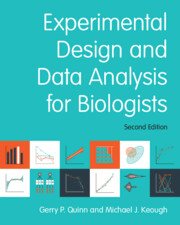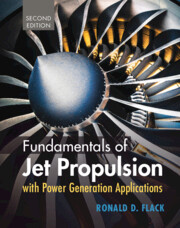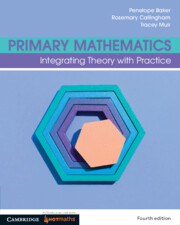Refine search
Actions for selected content:
36901 results in Cambridge Textbooks

Experimental Design and Data Analysis for Biologists
-
- Published online:
- 04 September 2023
- Print publication:
- 07 September 2023
-
- Textbook
- Export citation

Fundamentals of Jet Propulsion with Power Generation Applications
-
- Published online:
- 01 September 2023
- Print publication:
- 10 August 2023
-
- Textbook
- Export citation

Primary Mathematics
- Integrating Theory with Practice
-
- Published online:
- 01 September 2023
- Print publication:
- 07 September 2023
-
- Textbook
- Export citation
References
-
- Book:
- The Science of Romantic Relationships
- Published online:
- 17 August 2023
- Print publication:
- 31 August 2023, pp 503-596
-
- Chapter
- Export citation
9 - Composite Quantum Systems and Entanglement
- from Part II - The Principles of Quantum Theory
-
- Book:
- Quantum Theory
- Published online:
- 06 October 2023
- Print publication:
- 31 August 2023, pp 218-247
-
- Chapter
- Export citation
Dedication
-
- Book:
- Adversarial Learning and Secure AI
- Published online:
- 07 September 2023
- Print publication:
- 31 August 2023, pp v-vi
-
- Chapter
- Export citation
Contents
-
- Book:
- Analysing English Sentence Structure
- Published online:
- 16 September 2023
- Print publication:
- 31 August 2023, pp vii-xii
-
- Chapter
- Export citation
Part I - Foundational Ideas of Relationship Science
-
- Book:
- The Science of Romantic Relationships
- Published online:
- 17 August 2023
- Print publication:
- 31 August 2023, pp 1-120
-
- Chapter
- Export citation
3 - Electron Propagation
-
- Book:
- Applied Quantum Mechanics
- Published online:
- 27 October 2023
- Print publication:
- 31 August 2023, pp 105-169
-
- Chapter
- Export citation
Dedication
-
- Book:
- Quantum Theory
- Published online:
- 06 October 2023
- Print publication:
- 31 August 2023, pp v-vi
-
- Chapter
- Export citation
Copyright page
-
- Book:
- Quantum Theory
- Published online:
- 06 October 2023
- Print publication:
- 31 August 2023, pp iv-iv
-
- Chapter
- Export citation
Part III - Elementary Systems and Their Symmetries
-
- Book:
- Quantum Theory
- Published online:
- 06 October 2023
- Print publication:
- 31 August 2023, pp 271-438
-
- Chapter
- Export citation
3 - Hilbert Spaces and the Superposition Principle
- from Part II - The Principles of Quantum Theory
-
- Book:
- Quantum Theory
- Published online:
- 06 October 2023
- Print publication:
- 31 August 2023, pp 55-74
-
- Chapter
- Export citation
7 - Time Evolution
- from Part II - The Principles of Quantum Theory
-
- Book:
- Quantum Theory
- Published online:
- 06 October 2023
- Print publication:
- 31 August 2023, pp 169-198
-
- Chapter
- Export citation
Important Information
-
- Book:
- Quantum Theory
- Published online:
- 06 October 2023
- Print publication:
- 31 August 2023, pp xviii-xx
-
- Chapter
- Export citation
8 - Navigating the Challenges of Interdependence
- from Part III - Relationship Maintenance
-
- Book:
- The Science of Romantic Relationships
- Published online:
- 17 August 2023
- Print publication:
- 31 August 2023, pp 273-307
-
- Chapter
- Export citation
Epigraph
-
- Book:
- Applied Quantum Mechanics
- Published online:
- 27 October 2023
- Print publication:
- 31 August 2023, pp v-vi
-
- Chapter
- Export citation
7 - Biases and Illusions
- from Part III - Relationship Maintenance
-
- Book:
- The Science of Romantic Relationships
- Published online:
- 17 August 2023
- Print publication:
- 31 August 2023, pp 237-272
-
- Chapter
- Export citation
4 - Operators I
- from Part II - The Principles of Quantum Theory
-
- Book:
- Quantum Theory
- Published online:
- 06 October 2023
- Print publication:
- 31 August 2023, pp 75-104
-
- Chapter
- Export citation
10 - Enhancing Relationships Through Positive Interpersonal Processes
- from Part III - Relationship Maintenance
-
- Book:
- The Science of Romantic Relationships
- Published online:
- 17 August 2023
- Print publication:
- 31 August 2023, pp 343-377
-
- Chapter
- Export citation
